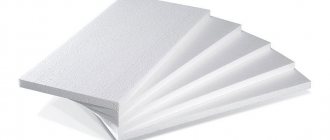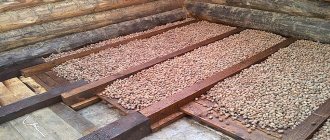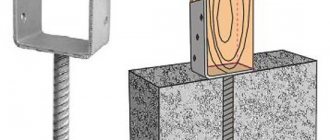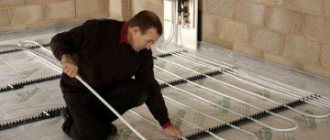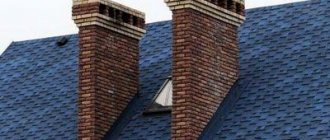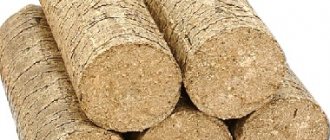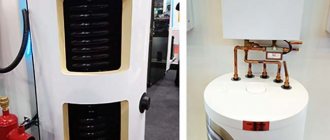Do-it-yourself material recycling
If you want to know exactly how you can recycle polystyrene foam, we suggest you consider the step-by-step instructions. All you need is enough foam and a crusher. Then you can get polystyrene foam granules and use them for your own purposes. If you don’t have your own foam crusher, you can make one yourself. After all, factory models have a very high price.
Here's what you'll need to have a new useful tool on your farm:
- sewer PVC pipe, diameter 50 mm;
- tape measure and marker;
- metal file;
- a wooden beam that would fit inside the pipe;
- metal screws;
- screwdriver and drill;
- metal studs with bolts;
- Chipboard or plywood to create a box.
Using this set of tools and materials, you can create a working foam crusher. With its help, sheets or others will turn into crumbs. The mechanism is based on a moving part with teeth, which crush the foam into granules. And thanks to the container or box, it is easier to direct the material to the rotating mechanism. You will learn exactly how to create a crusher in this video.
So, when the crusher is ready, you can start working. Here's what to do:
- Choose a suitable location. Alternatively, choose a garage, warehouse, storage room or shed.
- Install the crusher, taking care of the container underneath it, where the crumbs will fall. This could be a bucket, bag or wooden box.
- Foam sheets are easy to crush. But as for figured products, it is better to break them into pieces with your hands in advance.
- Now all that remains is to turn on our homemade unit and gradually process the raw materials.
Thanks to this technology, most of the granules will remain intact. This means that they will cope with their task better than ever. You just need to be careful, as the foam is electrified and very light
It is important to make sure that there are no drafts in the room, otherwise you will have to remove everything from the floor later. Now the foam can be collected in bags and used immediately or stored until it has its time
Note! If you melt the foam with acetone, it can be used in liquid form as glue. Although the mixture cannot be called safe
A little about the material itself
Before moving directly to the most important thing, I want to devote a few words to foam plastic. Essentially, this material is foamed plastic, a set of thin-walled plastic vessels filled with air. The description is very exaggerated, but it very clearly conveys its device and the presence of technical characteristics associated with it.
The cellular structure is very easy to see even with the naked eye
What is the problem with cutting?
In the photo above, the tiny fragments that make up the foam board are clearly visible, and you can even see that in some places they have already flown off. This is where the difficulties associated with even cutting of this material lie: fragility. It easily crumbles or even breaks completely when in contact with various tools or even just bare hands.
The slab can turn into crumbs very quickly
Thus, during the cutting process, it is necessary to achieve such a result that the tool passes through the foam with minimal resistance, without causing destruction of its structure.
Density is important
In addition to the technology that you choose to implement your plan, an important factor is also the density of the foam, which is easily determined by the markings applied to it:
- PSB-S-15. The cheapest and most fragile brand , which is used exclusively as a thermal insulation material placed behind decorative trim. Technical data:
| Characteristic | Meaning |
| Density | 10.15 kg/m3 |
| Compressive strength | 0.05 MPa |
| Flexural strength | 0.07 MPa |
| Coefficient of thermal conductivity | 0.037 W/(m×K) |
This is what the markings on purchased foam sections may look like
- PSB-S-25. The most popular option when carrying out finishing work, as it is still incredibly cheap, but at the same time has higher strength characteristics that simplify its operation. Technical data:
| Characteristic | Meaning |
| Density | 15.25 kg/m3 |
| Compressive strength | 0.1 MPa |
| Flexural strength | 0.18 MPa |
| Coefficient of thermal conductivity | 0.035 W/(m×K) |
Example of marking PSB-S-25
- PSB-S-35. These samples can withstand physical impacts much better, which is why they are widely used in the construction of swimming pools, sports fields, lawns and insulation of foundations. Accordingly, their cutting is easier with less waste. Technical data:
| Characteristic | Meaning |
| Density | 25.35 kg/m3 |
| Compressive strength | 0.16 MPa |
| Flexural strength | 0.25 MPa |
| Coefficient of thermal conductivity | 0.033 W/(m×K) |
Sample of applied marking PSB-S-35
- PSB-S-50. This brand has the highest density , which allows you to create the most complex artistic figures from it with your own hands, even with simple tools.
PSB-S-50 - the most durable foam boards
Thus, the first thing to do to prevent foam from crumbling is to choose a product of the appropriate brand. Although, of course, if the quality of the cut does not matter in your situation, then there is no need to overpay for strength.
Materials for production
Since there are several types of such material, accordingly, it is produced from various raw materials. The most popular today are products from:
- polystyrene;
- polyurethane;
- polyvinyl chloride;
- polyethylene.
Let's take a closer look at the production of each of these types of foam:
- Polystyrene foam is made from styrene polymers. This substance has minimal strength and can be easily dissolved with gasoline or acetone. This type of foam is formed by gas-filling styrene granules. Also, the procedure for obtaining such substances involves the use of additional substances that improve the structure or color the product itself.
- Polyurethane foam has good technical characteristics, which depend on the procedure for obtaining such a substance. Polyurethane polymers are very often used in various industries. The structure of foam made from such substances can be different (hard or elastic), which is obtained from certain types of these raw materials. This material is obtained by foaming using special gases.
To obtain polyvinyl chloride foam, they resort to heating the raw material and then foaming it under the influence of various gases. To obtain a material with the original characteristics, the resulting mixture can be pressed.
The mechanical properties of polystyrene foam are also controlled using special substances that are added during its production process.
Polyethylene is used as a raw material for the preparation of such products. The foam made from it is soft and almost colorless.
Such products are used as wrapping for packaging various plumbing fixtures and household appliances. Such material is also obtained under the influence of gases that penetrate the pores of polyethylene.
Polystyrene foam is popular as insulation, and therefore it is often used to insulate the facades of houses.
Watch the video to see how polystyrene foam is made:
All stages of foam production technology are considered. The equipment needed to produce this material is listed. Recommendations are given that you should definitely read before purchasing.
Many of us have come across expanded polystyrene more than once, tried it to the touch, made something from it, used it in construction, for home improvement. However, not everyone knows what the foam manufacturing technology is and what its features are.
Oddly enough, there is nothing super complicated in the production of this material. And it is noteworthy that now quite a lot of low-quality polystyrene foam has appeared on the market, which is made without taking into account the relevant norms and regulations.
Some craftsmen manage to create a small production line even in an ordinary garage. Yes, don't be surprised.
And this must be taken into account when purchasing - not all Vasya Pupkins strictly adhere to the prescribed technological standards. And what standards can there be in a garage?
Foam Cutting Tools
The following methods are used in home and professional use:
- Knife. A stationery and construction knife with a sharp blade can be used to cut sheets of medium thickness. With preliminary training and precise actions, the cut turns out to be quite even;
- Hacksaw. To cut foam, you can use a wood or metal hacksaw with a fine-toothed blade. The method can be used for materials up to 50 mm thick;
- String. The use of strings or wires of small diameter is justified for cutting thin foam plastic. To do this, handles are fixed on both sides, and the actions are performed by analogy with sawing with a two-handed saw. It is most convenient to act together, and the sheet should be securely fastened;
- Soldering iron. By installing a blade attachment on a blowtorch, you can achieve a minimum level of crumbling of the material during the cutting process;
- Thermal cutter. A professional device for cutting expanded polystyrene acts on the material with a hot thread or wire. Some types of cutters are difficult to handle and quite expensive, but they can be used to achieve a perfect cut;
- Laser cutting. The method is used in industry using a computerized program.
Raw materials and technology
Polystyrene foam is made from special expanded polystyrene foam. Its cost largely depends on the manufacturer and fraction. The price of raw materials for the production of polystyrene foam ranges from $2 per 25 kg.
When purchasing expanded polystyrene, pay special attention to its quality. Domestic raw materials can be purchased at a low price, but this may negatively affect the quality of the finished product
Imported polystyrene foam allows you to obtain high-quality material with a small amount of defects. Recently, the main raw materials have been purchased from China.
Pay attention to the quality of polystyrene, as well as the duration of its storage. The older the raw material, the longer the foaming process will take and the more difficult it is to achieve the density of the foam granule
What is needed to produce expanded polystyrene?
- Raw materials (expanded polystyrene foam);
- Steam (temperature about 110 degrees);
- Electricity (voltage 980 W);
- Cold water;
- Equipment.
Production technology
When the starting material enters the pre-expander, the granules are inflated and turned into balls. If necessary, this process is repeated. After foaming, the granules increase in volume. This foam production technology is used to produce low-strength material.
Video on the topic Video on the topic
Using recycled polystyrene foam
Construction is a process that requires large investments. And if you have polystyrene foam, it will definitely find its use at a construction site. For example, foam chips can be used as filler for site depressions and uneven areas. It is clear that they cannot level the road, but it is easy to make a path or other unevenness. Recycled polystyrene foam can be filled into a well of different hole or cavity diameters.
Note! Over the years, the material will not change and will remain in the form and form in which it was left. It perfectly absorbs and thaws moisture
Therefore, metal containers with polystyrene foam are not so susceptible to corrosion.
In the construction business, recycled polystyrene foam is used to create lightweight bricks. Its structure is such that it is popularly called perforated. Even lightweight concrete has appeared, which, as experts say, is no less durable than regular concrete. This is polystyrene biton - an excellent building material. It consists of Portland cement, foam granules itself, water and an air-entraining additive. Sometimes sand is added to the mixture.
Another area of use is design. Designers love foam plastic very much and use it in a variety of ways. It is used to decorate walls, create pots, plant pots or similar accessories. Garden figurines or stands look very nice. They are created by pouring them into molds and heating them. You can find a variety of options for making polystyrene at home.
Do-it-yourself crusher from a milling cutter
All owners of garden plots, or people living in the private sector, are faced with the problem of disposing of dry cuttings of tree branches and shrubs. Every year the pile of brushwood increases, spoiling the appearance of the site and creating a fire hazard. How to properly get rid of old dry branches?
- Use the services of a waste removal and recycling company. Effective, but expensive. You voluntarily give the material into the wrong hands and pay money for it;
- Burn a bunch of dry cuttings right on the site. Completely free, except for the possible payment of a fine. But at the same time, you inhale choking smoke and create inconvenience for your neighbors. Not to mention the danger of fire for buildings on the site. The place over which the fire burned remains infertile for several years;
- Process the trimmings into compost for subsequent fertilization of your green spaces. The method is ideal, however, it takes a long time for whole branches to rot into compost. The process will speed up if you grind them into chips. There is a special device for this - a garden branch shredder.
The principle of its operation is simple - a cutter rotates inside the mechanism, grinding the branches into a homogeneous mass. The drive can be manual, mechanical (using an internal combustion engine), or electric. The last option is the most popular due to its simplicity of design.
These devices are widely available on sale, but you can make a branch chopper with your own hands. Of course, the design will not be completely free. Some components will have to be purchased.
How to make a garden electric wood chipper with your own hands
What is needed for production:
- Electric motor with a power of about 1-2 kW;
- Circular saws with a diameter of 100-200 mm in the amount of 10-15 pieces or a milling cutter with large teeth;
- Steel circle or finished axle. The diameter must correspond to the mounting socket of the circular saws;
- A set of washers 5-7 mm thick to separate discs. The inner diameter must match the thickness of the axle. Quantity according to the number of circular saws;
- A belt with pulleys for transmitting torque from the engine. Suitable from the domestic auto industry;
- Channel or corner for the frame;
- Steel sheet 3-5 mm thick for the working hopper;
- Steel sheet 2-3 mm for the guide socket;
- A pair of wheels from a garden cart, if the homemade wood chipper is supposed to be moved from place to place;
- Welding machine, grinder, drill, set of fasteners.
How to make a branch chipper based on circular saws?
We purchase 10-15 blades, preferably with attachments for hard steel teeth. We select or manufacture a set of steel spacer washers to separate the disks on the shaft. The distance between the saws should be about 10 mm. If you do more, small branches will get stuck; if you do less, the width of the working area will decrease.
We place a package of disks with washers on the shaft. It can be turned on a lathe, or you can use one from an old car gearbox.
We weld a strong frame from a channel or corner. We install the foundation for the electric motor from below. Be sure to provide the ability to move the engine to regulate the tension of the drive belt.
On the crossbars we arrange pedestals for the ball bearings on which the working shaft is mounted. Distortions are not allowed; the axes of the motor and shaft must be parallel.
We make a working hopper in which the grinding will take place. It must be durable and withstand impacts from flying pieces of wood. We pay special attention to the base plate, or passive knife. It is against this that the branches will rest during crushing.
It is advisable to make it adjustable in relation to the cutting elements. Then you can change the size of the chips. For example, for heating, large pieces are chopped. And for compost - smaller.
How polystyrene foam is made
Previously we told. We remember that this material consists of numerous cells filled with air. This means that the manufacturing process must include foaming the material.
That’s right: the foaming process is one of the most important in the production of expanded polystyrene
.
However, that's not all.
Consider:
Stages of foam manufacturing technology
Typically the process includes:
Now in more detail:
1. Foaming.
During this process, the raw materials are placed in a special container (foaming agent), where, under pressure (a steam generator is used), the granules increase approximately 20-50 times. The operation is completed within 5 minutes. When the granules reach the required size, the operator turns off the steam generator and unloads the foam material from the container.
2. Drying the resulting granules.
At this stage, the main goal is to remove excess moisture remaining on the granules. This is done using hot air - it is directed from bottom to top. At the same time, for better drying, the granules are shaken. This process also does not last long - about 5 minutes.
3. Stabilization (tracking).
The granules are placed in bunkers, where the aging process takes place. The duration of the process is 4...12 hours (depending on the ambient temperature and the size of the granules).
Important note: the polystyrene foam manufacturing technology may exclude the 2nd stage (drying). In this case, stabilization (tracking) will last longer - up to 24 hours
4. Baking.
This stage of foam production is often called molding. The idea is to connect the previously obtained granules together. To do this, they are placed in a special mold, after which the granules are sintered under pressure and under the influence of high temperature water vapor. Lasts approximately 10 minutes.
5. Maturation (aging).
The goal is to rid the resulting polystyrene foam sheets of excess moisture, as well as remaining internal stresses. To do this, the sheets are placed in a free space in the production workshop for several days. In some cases, ripening can take up to 30 days.
6. Cutting.
The manufactured foam blocks are placed on a special machine, on which the blocks are cut into sheets of appropriate thickness, length, width. This manufacturing process is performed using nichrome strings heated to a specific temperature. Accordingly, both horizontal and vertical cutting of blocks is carried out.
This is how foam is made.
Of course, after the above 6 stages, the 7th stage can be performed - processing the remaining trimmings
. As a result, they are mixed with other granules, which will then undergo the same processes - sintering, curing...
The equipment that is used in the production of polystyrene foam is shown in table form:
The principle of operation of a do-it-yourself foam crusher
In the production of foam chips the following is used:
- production of granules of a given size using a special technology by foaming polystyrene balls;
- waste processing – shredding polystyrene foam residues in special structures for shredding polystyrene foam.
Crushed material is used in construction as a component of cement mortar to level the surface and form concrete floor screeds. The recycled foam product is the basis for the production of polystyrene concrete.
The expanded polystyrene shredder consists of the following components:
- grounds;
- motor casing;
- bunker;
- tank;
- damper handles.
The crushing chamber structure includes a body, a base, a knife plate and a mesh. Using an adjusting mechanism and a spring block, the distance between the rolls is set.
Waste foam is loaded into a tank, from where it enters the work area. During rotational movements, the shaft passes through the axes of the drum, the foam falls between the knives and is cut into fractionated parts.
The crushed material is removed from the working area for sorting onto a mesh with air. Large pieces of waste are again returned under the knife for grinding, and the crushed foam is fed into the dispensing hopper.
The process of creating polystyrene foam
This material is made from expanded polystyrene by foaming it. Almost 98% of it consists of gas. There are 6 stages of creating polystyrene foam in an industrial environment:
Let's look at each of the stages. To begin with, the raw materials are poured into a foaming agent, after which the steam generator generates pressure at which the granules begin to increase from 20 to 50 times. The entire foaming process takes 5 minutes. When the desired size is reached, the raw materials are unloaded for drying. It is needed so that excess moisture on the granules evaporates. Everything happens due to hot air directed from bottom to top. Drying and shaking takes about 5 minutes.
Then the raw materials are moved to bunkers, where they are aged for 4-12 hours. The foam is then formed or baked. The main task is to connect all the granules, creating a slab or other desired element. To do this, they are poured into a mold and subjected to pressure under high temperature from steam. Baking lasts 10 minutes. Next, the finished foam must be left to rest to get rid of moisture and tension inside. Sometimes ripening lasts a whole month. At the end of this stage, the block is installed on a machine that cuts the material into shape. The machine has nichrome strings that heat up and cut foam with ease.
The production also processes foam plastic. After all, when created, pieces remain. So they are processed. Why recycle material at all?
Types of foam shredders
There are several types of polystyrene foam granules, which are also called polystyrene foam balls, crushed foam, recycled material, and crumbs. Crushed polystyrene foam is a material obtained by grinding. A shaft crusher is used for its production.
The shredder is designed as a grater that is mounted on a shaft. The movement of the drum on the shaft occurs with the help of a motor through a gearbox, which reduces the number of revolutions.
The waste pieces are fed through a guide pipe onto the grater. The adjusted gap between the cutting elements and the float holes determines the fraction of material at the outlet. If such an installation is located indoors and a dust collector is installed on the engine, then you do not need to use a protective casing around the shaft.
The hammer crusher is designed for crushing dense grades of molded foam while maintaining the throughput of the mechanism. A mesh installed at the outlet makes it possible to obtain small particles. The rotary design equipped with sieves has high productivity. The size of the output fraction is regulated by a calibrating grid.
For large volumes of foam chip production, industrial equipment is used . The waste enters the crusher body towards two knives mounted on the drum and shaft. Between the cutting edges, the material is crushed, and the output is granules of the desired fraction.
Mesh crusher
A mesh crusher of foam plastic, the properties of which is destruction, works on the principle of a grater machine . Its design consists of:
- from a shaft with a fixed mesh;
- disk;
- base on which the motor and shaft are mounted.
The foam crusher is driven by a motor from a concrete mixer. Waste foam is fed onto a rotating grid. The size of the granules is determined by the diameter of the holes.
Feeding is done manually and requires additional cutting of materials to fit the width of the disk. The advantage of this equipment option is its low cost. Disadvantages include the difficulty of grinding all the pieces and the presence of dust.
Making polystyrene foam at home
First you need to purchase raw materials - foaming polystyrene. Expandable polystyrene is a product of the chemical industry
When purchasing it, you should pay attention to the warranty storage lines. The rule here is that the “older” the foaming polystyrene granules are, the longer the foaming process takes and the more difficult it is to obtain the required density
It is important to immediately draw the attention of readers of this article to the fact that making small quantities of polystyrene foam at home is, to put it mildly, unprofitable. If the conditions require insulating boards or baguettes, which fill the building materials market, it is much easier and cheaper to buy them and not fool yourself
But for enthusiasts who specialize in the production of exclusive designer products (like handmade craftsmanship), technology will be useful - making polystyrene foam at home
, which will be described below. Since this material adheres well, it is possible to invent and come up with complex products from segments of different shapes and cross-sections.
What can foam molds be made from?
Various materials can be used to make foam molds, from ceramics to wood. Molds made of steel or tin-casting molds last a long time.
You can also use heat-resistant plastic. If you decide to use silicone culinary molds as forms for polystyrene foam, they must be strengthened with alabaster or plaster - simply fill a suitable container with alabaster or gypsum solution and dip the mold into it to the very edges. It is quite difficult to weld the finished product to the mold, as is gluing foam plastic to other surfaces.
Manufacturing technology and processing of polystyrene foam at home
The technology for producing polystyrene foam at home involves two-stage steaming of the raw materials. In this case, all kinds of household appliances can be used as a source of steam: a steam mop or a Karcher-type washing unit with a steam generation function.
The amount of steam generated by these devices will be quite sufficient for the production of small products that fit on the palms of the hands. As a rule, these products are used to decorate the interior of premises.
The first steaming of polystyrene foam can be organized in a regular metal bucket. Fill it 20% (1/5) of the volume with foaming polystyrene granules, immerse the hose from the steam generator into the thickness of the granules and, running the device in a circular motion, treat the granules with steam.
After a certain period of time, the granules will increase in size and fill the bucket to the very top. Now you should distribute the primary processed raw material into molds and process it with steam until the granules stick together.
Now you don’t need to mix them, just lower the hose to the bottom of the mold and turn on the steam generator. Thus, you will get a kind of gap into which you can attach the foam and easily remove it from the mold.
It should be taken into account that the thinner and more prominent the product, the smaller the diameter of the primary granules (after the first foaming-steaming). And the larger they are, the lighter and more fragile the finished product.
The production of building materials has always brought good income. This also applies to polystyrene foam. Today, this material is in great demand in the domestic market.
If you decide to open your own business and make a good fortune, pay attention to the business plan for the production of polystyrene foam. To implement this idea, you will not need a large start-up capital, as is the case with, for example, so any aspiring entrepreneur can start this business
Foam manufacturing technology directly affects quality
As we said above, the market is now filled with a considerable amount of low-quality material. It can be produced in garages or some warehouses.
But the main problem is not where the material is made (although the environment also affects quality), the main problem is not following all the rules for making polystyrene foam.
What deviations may there be from the correct production of expanded polystyrene?
The most varied - from poor-quality granulation to poor, inaccurate cutting of foam blocks into sheets.
Some smart guys don’t carry out stabilization or aging at all. For them, the speed of production of polystyrene foam is exclusively important.
Because of this, things get much worse:
- it may turn out to be fragile, fragile,
- granules may be poorly connected to each other,
- density may be uneven.
This can also occur due to low-quality, faulty equipment that was used in production - foamers, dryers, compressors, steam generators, etc.
And another important point
: with poor manufacturing technology, foam plastic may have a sharp, unpleasant odor. The following picture is possible: they brought brand new sheets of expanded polystyrene home, placed them in a garage or other room and... soon they heard that the room was filled with some kind of pungent, unpleasant smell.
This is very bad. This means that the foam is still “floating”, releasing harmful substances. It is especially dangerous when such low-grade material is stored in residential areas.
Location
To choose the right geographical location for a business, it is necessary to conduct thorough market research. The most favorable regions for doing business are those regions in which the supply of a given product does not completely cover the demand. In such a place you can safely launch your commercial project.
Do not forget to clearly work out and include in the business plan the ways of selling the finished material. This is a very important point on which the profitability of your enterprise largely depends. In addition, the seasonality of the business should be taken into account. During a period when demand for products falls, you can switch to the production of foam products. This will allow you to ensure a stable year-round income.
The main consumer of polystyrene foam is. Each of them is already collaborating with other manufacturers
You need to attract their attention to your product with low prices, but at the same time good quality. To ensure stable sales of products, it is necessary to find regular wholesale buyers, for example, and conclude agreements with them
Recycling materials: why and how
If we talk about large-scale production, the goal is clear - there is a lot of waste, and this means additional funds. What can we say about us, ordinary users? The thing is that over the years there is more and more material in the house. It takes up space and accumulates more. It is not recommended to burn it, as it releases harmful substances, and throwing it away is also not an option.
So it turns out that the correct and effective solution is to recycle it or do it yourself. This type of recycling of polystyrene foam will help you use it for another purpose and get rid of excess garbage at home.
To do this yourself, it is important:
- will be determined for the purpose of processing and creating polystyrene foam;
- choose the optimal place where you can bring everything to life;
- will determine the method of influencing foam waste.
Many people choose to use polystyrene foam as packaging material. Storing it in finished form is problematic, but grinding it will help solve the problem. To start recycling, you need a foam crusher.
There are several ways to recycle or dispose of polystyrene foam:
Some may ask: why do I need crushed foam? It can be used not only for transportation, but also as a thermal insulation material. Let's look at where else it will come in handy.
Plastic shredder (plastic bottles, plastic, foam)
The production of various polymers, especially plastic bottles, has gained rapid momentum these days. The use of various types of crushers for plastic products has become not only necessary, but also mandatory due to the high demand for plastic products.
Both rotary and polymer crushers are suitable for shredding plastic waste.
Plastic waste crushing technology
When crushing plastic waste, several types of crushers are used:
- Circular and band saws.
- Rotary knife crushers.
- Fine grinding mills (they are used to produce material in powder form).
Diagram of a rotary knife crusher
Every year crushing units are being improved to reduce the noise generated during operation.
Conclusions on the production of polystyrene foam
- The technology is quite simple, but requires mandatory compliance with all prescribed norms and rules.
- Material (which will look like high-quality material) can be obtained even with significant deviations from the production rules. And “handicraft” companies (bad people) take advantage of this.
Therefore: buy only products from reliable, trusted manufacturers (who monitor quality)
. Check that sellers have the appropriate quality certificates.
Now you know how polystyrene foam is made, you know the main features of manufacturing technology and which material should be preferred. Good luck!
